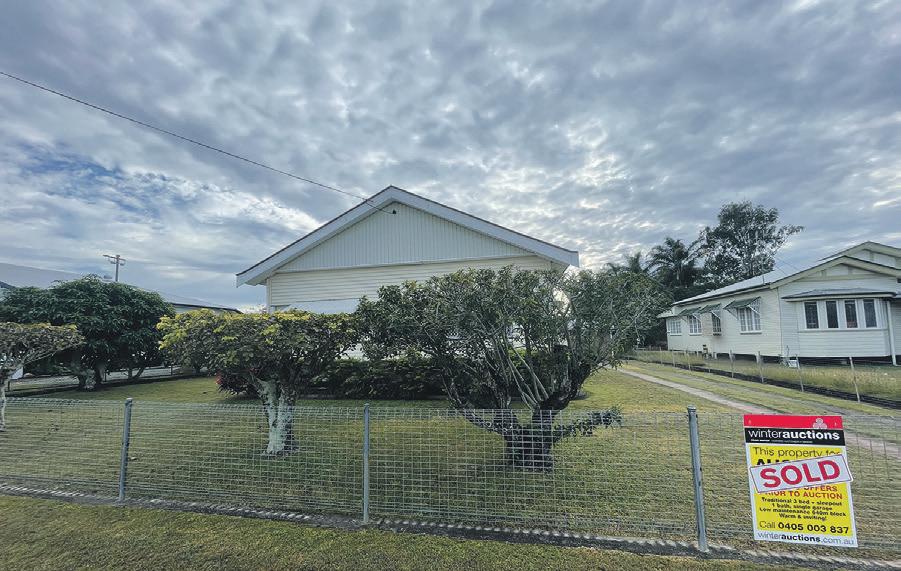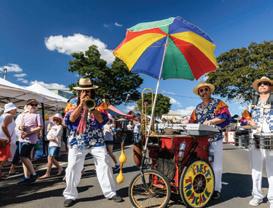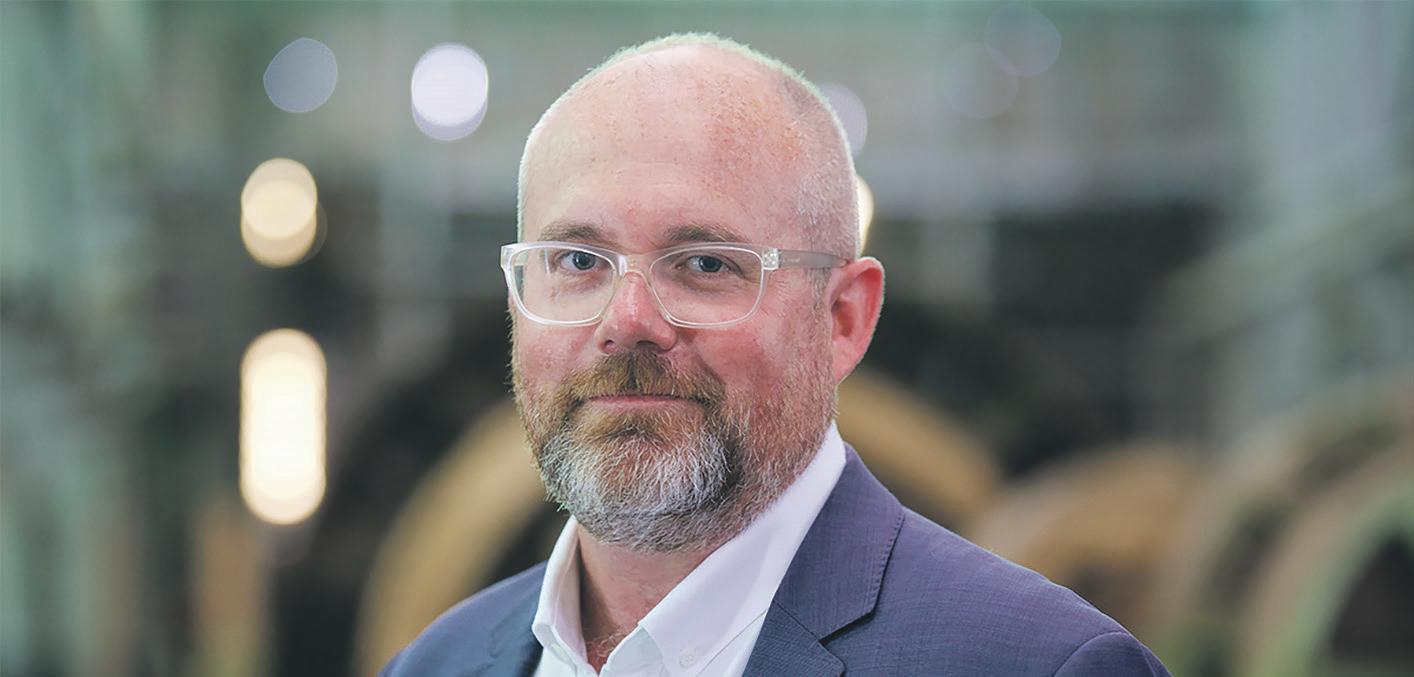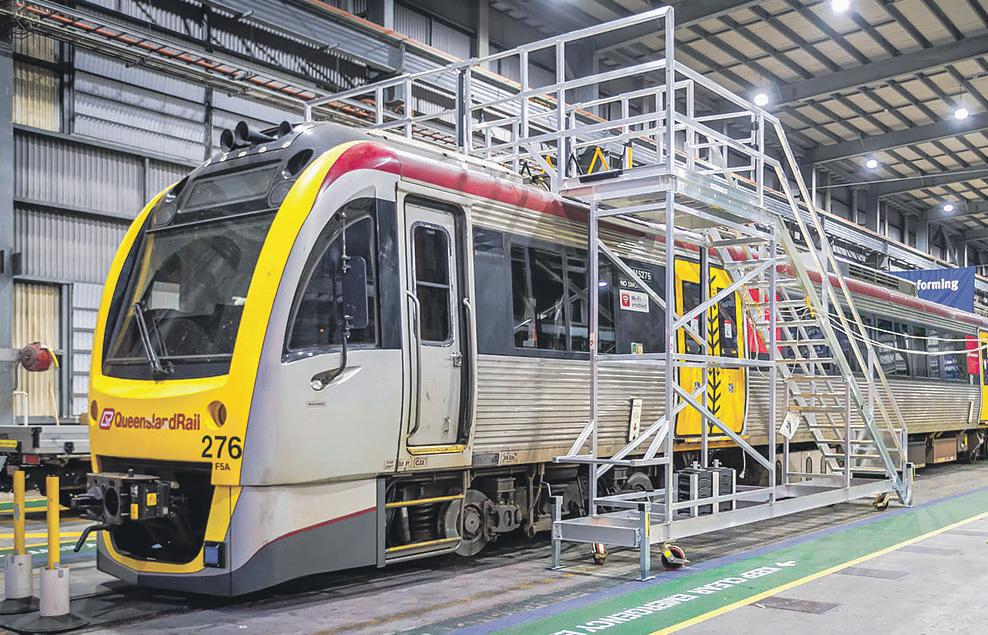
3 minute read
Regional Queensland critical to Australian manufacturing

From ASSISTANT MINISTER FOR MANUFACTURING, TIM AYRES
manufacturing industry.
Maryborough also boasts a strong rental market.
Landlords are in a good position to cash in with a gross rental yield of 6.3 per cent, a median rent of $410 and low vacancy rates.
“Investors will find Maryborough’s relatively low entry price point and projected growth potential highly attractive, while projected tourism figures for the region mean the demand for both short-term and long-term rental properties is expected to rise,” the report said.

Meanwhile, new research from a subsidiary of the PropTech Group, Real Estate Investar, has also identified Maryborough among the locations with the most opportunities to subdivide.
Joe Hanna, managing director and chief executive officer at PropTech Group, said he believed the fact properties with high subdivision opportunities were not more expensive showed there was still many opportunities for investors.

“The purchase price isn’t higher and doesn’t reflect the value you can unlock by subdividing. That’s probably because of the work and uncertainty involved in the process,” he said.
“There is plenty of opportunities for investors willing to go this route.”
IT’S BEEN a big month for Australian manufacturing and for the story of train manufacturing in regional Australia.
A few weeks ago, I was in Maryborough, the heart of Australian rail manufacturing, to announce that the Albanese Government is taking another step in delivering our National Rail Manufacturing Plan to build more trains here.
While I am reluctant to concede this point during State of Origin season, it’s clear Queensland has led by example. Investing billions of dollars in rail manufacturing and fighting for good, local jobs in the process.
Rail manufacturing is core to the story of Queensland and its progress.
In 1873 John Walker relocated his workshops from Ballarat to Maryborough and built Queensland’s first steam engine, 150 years ago.
The company he founded, Walkers Limited, went on to build thousands of trains and became a major manufacturer of railway rolling stock.
Queensland-made trains rolled out across Queensland and all over Australia.
That proud tradition persists today, broken only by the short period the Campbell Newman government sent rail manufacturing projects and jobs offshore. The election of a new Labor Queensland government has seen a return to a commitment to local manufacturing.
Recently, the Palaszczuk Queensland government committed $7.1 billion to boost the state’s rail
Down Under Coach Tours

Day Tours
My home state of New South Wales had a similar history. A long, proud history of making trains locally, broken by the former NSW Liberal government, openly hostile to local manufacturing, offshoring thousands of regional jobs.
The NSW Liberals put local jobs last – and were then mugged by overseas manufacturers who delivered late, over budget and with trains that didn’t fit at stations and ferries that didn’t fit under bridges.
Now the newly elected Minns Government has committed to future rail manufacturing in the state. The other states get it too.
The Victorian government is investing $986 million in 25 state of the art X’Trapolis 2.0 metro trains.
The Western Australian government is committing $1.6 billion to deliver 246 new C-series railcars, and six new diesel railcars to replace the existing Australind Service between Perth and Bunbury.
The Albanese Government’s National Rail Manufacturing Plan will help coordinate billions of dollars of state rail procurement and manufacturing to build a more sustainable and competitive rail manufacturing industry.

This will help to grow jobs, capability and export opportunities over the longterm - ensuring Australia gets maximum value for every dollar spent.
Australia can make the trains of the future, building long-term industrial capability and delivering good jobs in our regions and suburbs.
I was recently in Maryborough to announce the appointment of Jacqui
Walters as the National Rail Manufacturing Advocate and a Rail Innovation Council with eight leading experts from the rail sector.
Ms Walters’ decades of experience in the transport sector is complemented by her leadership experience driving large procurements in the energy sector and achieving strong outcomes for public expenditure.
She will help improve coordination of state and territory procurement of passenger trains, driving better outcomes for Australia and the hundreds of thousands of Australians who travel via the rail network every day.
State and territory governments are making multi-billion-dollar investments in passenger and freight trains and rail infrastructure to expand and modernise our public transport network.
Almost all Australian train manufacturing will happen in regional Australia, where companies like Downer support thousands of jobs both directly and through their supply chains.
On top of the fact that they create local, secure jobs, rail manufacturers generate significant economic activity and productivity.
Growing Australia’s industrial capability is critical.
Harvard University’s Economic Complexity Index shows Australia has dropped from 60th in the world almost two decades ago to 91st.
For almost a decade, we had a Coalition government at the federal level that didn’t have confidence in Australian industrial capability. As a consequence, thousands and thousands of manufacturing jobs were lost offshore, including in the car industry.
The Albanese Government’s Rail Plan will help drive further regional development and support the manufacturing jobs of the future.
To build trains right and build them right here.













